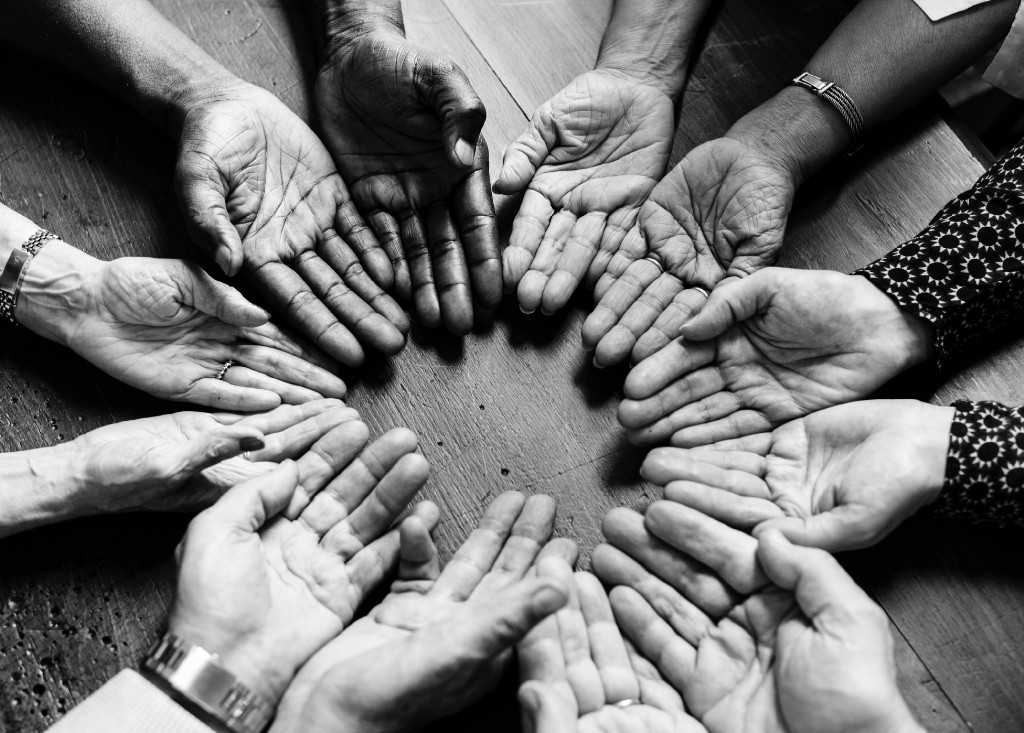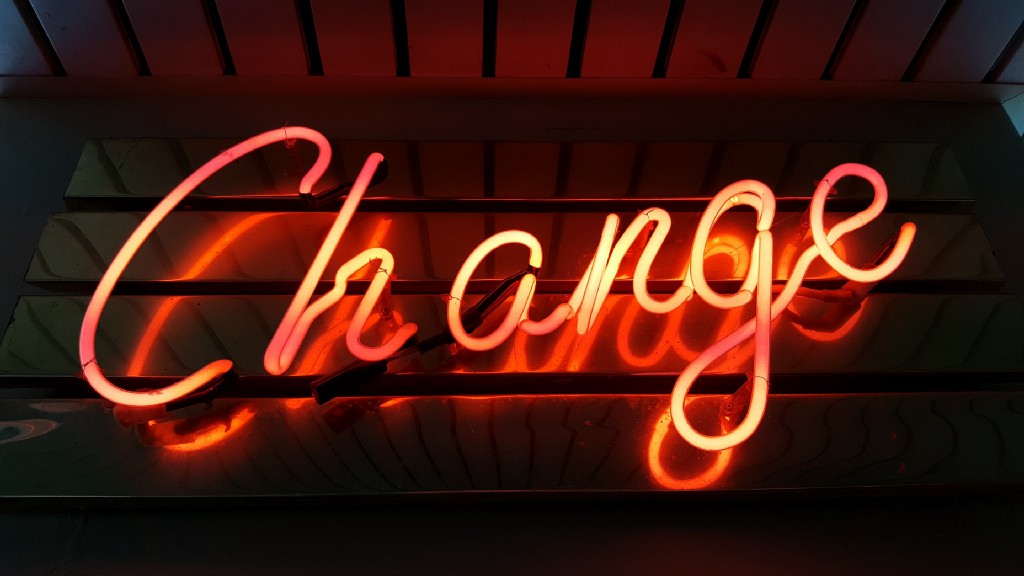This is an Eval Central archive copy, find the original at medium.com/innovationnetwork.
And their implications for evaluation
Power is an integral aspect of social change initiatives. It can shape relationships and enable or constrain the agency and impact of social change actors. Change actors constantly contend with power as they work to advance systems and structural change. But despite its significance, power is often missing from conversations about funding and evaluating social change.
In the past year at Innovation Network, we’ve noticed an increase in the number of nonprofits and funders asking us to help them assess and learn about the power-building efforts of organizations, networks, and movements.
To that end, we’re reviewing academic and practice-based works to better understand power, how it shows up in change ecosystems, and how we can appropriately evaluate it. Here’s what we’ve learned so far.

Lesson 1: Concepts of power are contested.
A constant across the literature is the lack of a common definition of power. Various pieces we’ve read describe power in turn as “sociologically amorphous,” “perpetually contested,” “polymorphous,” with a virtual “confetti of definitions and theories.”
So this wouldn’t be a real piece about power without first giving the usual disclaimer that definitions of power are contested, overwrought, and evolving.
If you’ve ever had a conversation with anyone about power, you’ve likely experienced this. I’ve personally found myself in discussions with people about power where it becomes immediately apparent that we’re talking past each other. While some people want to talk about structural types of power, others will talk about power building, and others still about power dynamics.
Implications for evaluation: If we want to assess power and power building, its critical to understand that definitions of power are numerous, and people will likely show up to the evaluation process with different understandings of power.
So how do we prioritize the varying definitions and concepts? We believe centering community and social change actors’ definitions and understandings of power will be critical. Community organizers, advocates, and movement builders have grappled with power and power building long before it became buzzy in the philanthropic and evaluation sectors. There is a lot we can learn from social change actors about power.
Lesson 2: Power is dynamic and multidimensional.
The lack of shared definition of power underscores that power is dynamic and multidimensional.
Academics and practitioners have identified countless ways that power manifests in the world. John Gaventa, an influential theorist of power, created the powercube in an effort to identify the different levels, spaces, and forms of power:
- Levels: Refers to the different levels where power is exercised, from the individual, family, organization levels up to the local, state, national, and global levels.
- Spaces: Refers to the spaces where power is exercised for decision-making and action. Gaventa describes spaces as being closed, invited, or claimed.
- Forms: Refers to the different ways power shows up, including its visible, hidden, or invisible forms (more on that in Lesson 3).
Others have built on these levels, spaces, and forms to identify different expressions of power (Lesson 5) and different types of power (Lesson 6).

The levels, spaces, forms, and expressions of power are not static. These dimensions of power are interrelated and dynamic, shifting and evolving over time. Gaventa described it this way: “Each dimension of the powercube is constantly interrelating with the other, constantly changing the synergies of power. For instance, what happens at global decision-making levels can affect the spaces available for participation and engagement; which spaces are available affect the forms of power within them.”
Implications for evaluation: All systems change efforts exist in complex ecosystems of power. These ecosystems include a diverse range of social change actors, their opposition, and the decisionmakers, institutions, and systems they seek to influence. Power shapes the relationships between these actors and their ability to advance their interests. Power can take many forms and show up in countless different ways.
To address this complexity, we believe evaluating power and power building will require a developmental approach. Evaluators of power will need to be ready for shifting power dynamics and to identify and assess new forms and sources of power as they emerge.
Lesson 3: Examining power can help us understand the structural forces that enable or constrain change efforts.
Power over is the longest-standing, most recognized expression of power. This concept sees power as being fundamentally repressive and negative, all about domination and control. Some of the earliest theorists described power this way. In recent years, some theorists have started taking a more nuanced view of power over. They recognize that while power can be negative and repressive, dominant social structures and historical, social, and cultural forces can exert power in a way that is beneficial to social change efforts.
Either way, power over underscores that dominant historical and structural forces can have a powerful influence on the relationships, capacity, and impact of change efforts.
In 1974, Stephen Lukes provided one of the most oft-cited theories of power over in his book, Power: A Radical View. In this book, Lukes introduced the “three faces” of power over — visible, hidden, and invisible.
- Visible: Visible power refers to power that is publicly visible or that takes place in formal decisionmaking spaces. Arenas for visible power include laws, legislatures, and courts.
- Hidden: Hidden power is exercised by powerholders to maintain their power and privilege by systematically excluding people and their interests from decisionmaking tables and processes. Hidden power can manifest in how issues are framed and how institutions are structured.
- Invisible: Invisible power shapes people’s worldviews, ideologies, and sense of agency. Powerholders may exercise invisible power by developing dominant narratives and tailoring the information available to the public to hide the existence and sources of injustice.
Lukes’s three faces of power have gotten a lot of play in social change spaces and have shown up in the work of other organizations, including Just Associates and the Grassroots Policy Project. These organizations have used the three faces of power to encourage social change organizations to take a more holistic view of the forces that facilitate or inhibit social change.
Implications for evaluation: By examining and mapping the structural forces that exercise power over a change ecosystem, we can better understand the contextual factors, systems, and structures that enable or constrain social change. This understanding makes evaluation findings more valid and useful, by deepening our understanding of which power-building approaches work under what conditions.
Lesson 4: Power building is at the heart of grassroots-led change efforts and can help us understand the progress and success of change initiatives.
Power doesn’t just lie in social structures and institutions, social change actors also have the ability to build and exercise their own power.
Gene Sharp, one of the world’s leading thinkers on nonviolent action, was a big believer in the social view of power. This idea emphasizes that the power of decisionmakers and institutions depends on the consent and cooperation of ordinary people. People can wield power by collectively giving or withdrawing their support for systems, institutions, and decisionmakers.
The idea that power lies in the hands of the public is one that is essential to grassroots-led change efforts like community organizing and social movements. Grassroots efforts flip the script on who is the powerholder, stressing that power lies not just in formal institutions and visible decisionmakers, but also in the general public.

For that reason, power building is often fundamental to the theory of change of grassroots-led change efforts. Building long-term power is often not just a means to an end but a critical end in itself.
Implications for evaluation: Power building is an important lens through which we can view the progress and success of change efforts. Assessing power building will require us to think differently about how success is defined. Contrary to what some might think, policy and systems change is not the end goal of all social change. “Winning” is also about building and maintaining long-term power in communities. How would it change our understanding and assessment of social change efforts if we saw them through a lens of power building?
Lesson 5: Power to, power with, and power within are three expressions of power building that provide us with a starter framework for assessing power.
In A New Weave of Power, People, and Politics, Lisa VeneKlasen and Valerie Miller made the case that power can be used as a positive force to advance affirmative change in society. They outlined three core expressions of power building: power to, power with, and power within.
- Power to (power as capacity): Most of the time when people talk about power building, power to is what they’re talking about. Power to refers to your ability to exercise agency or, as Martin Luther King Jr. said, “Power, properly understood, is nothing but the ability to achieve purpose. It is the strength required to bring about social, political, and economic change.” Having power to means you have the capacity, resources, and opportunities to advance your interests.
- Power with (power as relationships): Power with emphasizes that relationships are a significant source of power. Power with is about building collective strength across varying interests and stakeholders. Because long-term change often requires collective action, power with is a critical form of power building for social change initiatives.
- Power within (power as individual agency): Power within is about developing a person’s individual agency, self-empowerment, and self-worth. Some social change efforts, such as community organizing, seek to build power within the individual community members and leaders they serve and organize. In transformative organizing practice, for instance, social transformation is seen as being intertwined with personal transformation; social transformation is only possible when individuals have a sense of self-worth and individual agency.
Implications for evaluation: The three expressions of power building have helped us better understand the forms of power social change actors can build. We believe they provide us with a starter framework for identifying and assessing power building in social change efforts that can be adapted to the specific interventions we are called to evaluate.
Lesson 6: Governing, people, and narrative power are three common types of power building that advance structural change.
Some social change organizations and practitioners have started to identify, define, and operationalize the types of power building that are needed to advance change. Three power-building concepts have emerged that seem to be common across different organizations and change efforts: governing/governance power, people power, and narrative power.

Governing Power/Independent Political Power: Although they have different names, governing power and independent political power (IPP) have similar definitions and elements. Both are about building power to govern based on the values and priorities of grassroots communities. Governing power is about building political infrastructure and capacity that is independent from the dominant political parties. It goes beyond policy and electoral change to advance structural change and influence narratives, norms, and values. Some select resources about governing power/IPP:
- Demos. Independent Political Power.
- Grassroots Policy Project. Organizing for Governing Power.
- University of Southern California Program for Environmental and Regional Equity. Power and possibilities: A changing states approach to Arizona, Georgia, and Minnesota.
People Power: Similar to the social view of power discussed above, people power emphasizes that power comes from the engagement of ordinary people. People power is often about building power with an active, grassroots base. However, in the context of social movements especially, people power is also about building power to build, mobilize, and sustain large-scale public support. Select resources:
- Ayni Institute. Winning with the Masses.
- University of Southern California Program for Environmental and Regional Equity. Sustaining People Power.
Narrative Power: Narrative power is fundamentally about the power to transform and hold dominant public narratives and ideologies and to limit the influence of opposing narratives. Rashad Robinson from Color of Change sums it up nicely: “Narrative power is not merely the presence of our issues or issue frames on the front page. Rather, it is our ability to make that presence powerful — to be able to achieve presence in a way that forces change in decision-making and in the status quo.” Select resources:
- Grassroots Policy Project. Worldview and the contest of ideas.
- Rashad Robinson. Changing our narrative about narrative: the infrastructure required for building narrative power.
Implications for evaluation: While change initiatives do build other types of power, governing, people, and narrative power are often present in community organizing, electoral organizing, advocacy, and social movements. Given the contested nature of power concepts, we are finding that having some definition about these types of power building (and having a set of resources to draw on) provide a helpful starting place for discussions about power with funders, evaluators, and social change actors.

As more funders, organizers, and advocates start paying attention to power, it will become an increasingly important competency for evaluators who assess structural change efforts to know how power shows up in change ecosystems, how it is built, and how to appropriately measure. Over the next year, we’re building on these learnings to develop a set of resources for evaluating power building. Stay tuned!
If you like this post and want to see more from Innovation Network, be sure to clap for this article and follow our publication.
Six things we’ve learned about power was originally published in InnovationNetwork on Medium, where people are continuing the conversation by highlighting and responding to this story.